Pine trees may be beautiful and hardy, but they can leave behind a not-so-welcome gift: a carpet of pine needles. If you live in Bloomington, Indiana, you’ve probably asked yourself whether these needles are just a seasonal nuisance or a real threat to your lawn.
In this guide, we’ll break down the effects of pine needles on your yard, how often you should clean them up, and the best way to do it—especially in local climates like ours.
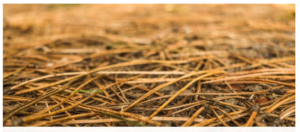
What Are the Risks of Leaving Pine Needles in Your Yard?
Pine needles can have more impact than you might expect. Here’s why it’s important to keep them in check:
-
They increase soil acidity – Over time, decomposing pine needles release acids that lower the pH of your soil. This makes it harder for grass and many plants to thrive.
-
They block sunlight and airflow – A thick layer of needles can act like mulch, but not in a good way. It can suffocate your lawn by keeping sunlight and oxygen from reaching the soil.
-
They steal moisture – Pine needles can absorb water from the surface before it reaches your grass roots, especially in dry seasons.
-
They invite weeds – Patchy grass and acidic soil make an ideal environment for weeds to move in.
Do Pine Needles Harm Grass and Plants?
Yes—especially when left unchecked.
The area directly underneath pine trees is often the first to suffer. Between the shade cast by the branches and the acidity from the pine needles, your grass can thin out or die altogether. Once bare patches appear, they’re tough to fix, and weeds often take over.
Plus, in areas like Bloomington that experience both dry and stormy conditions, dry pine needles can even become a fire hazard. In the American West and Midwest, pine needles are considered high-risk debris if left to pile up near structures.
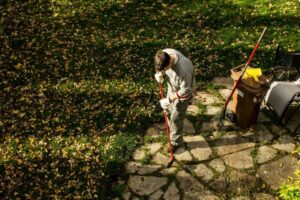
How Often Should You Remove Pine Needles?
At a minimum, you should clean up pine needles once a year—but most homeowners will benefit from doing it more often. A good rule of thumb:
-
Spring & Summer: Check monthly if you have pine trees nearby.
-
Fall & Winter: Remove them at least once in early winter after most needles have dropped.
If you can’t see green grass under a layer of pine needles, it’s time to grab the rake.
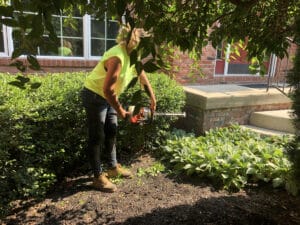
Best Tools for Pine Needle Cleanup
Pine needle cleanup requires a bit more effort than your average leaf raking. Here are the best tools for the job:
-
Leaf blowers – Great for quick cleanup over large areas.
-
Rakes with flexible tines – These are better suited than traditional stiff rakes.
-
Lawn vacuums – Ideal if your property collects a high volume of pine debris.
-
Mulching mowers – Can work if needles are dry and not too thick.
Needles can clump densely, so just mowing over them won’t cut it—literally.
Yard Maintenance Tips for Bloomington, Indiana Homeowners
Living in Bloomington means dealing with a mix of local weather patterns and native pine species. That means:
-
Regular yard inspections are essential, especially in stormy seasons.
-
Combining pine needle cleanup with other maintenance tasks—like weed removal and tree trimming—can improve your yard’s health long-term.
-
Scheduling seasonal cleanups ensures your grass stays healthy, green, and less prone to pests or drought stress.
Final Thoughts: Keep Your Lawn Healthy Year-Round
Pine needles may be natural, but too many of them can turn your healthy lawn into a patchy, acidic mess. Regular cleanup helps your grass breathe, grow, and resist weeds—and it lowers fire risk too.
If you’re tired of dealing with endless pine debris, Anthony’s Lawncare & Landscaping is here to help. We offer professional yard cleanup services tailored to Bloomington homeowners. Let us take care of the heavy lifting—so your lawn stays green, clean, and thriving.
📞 Call Anthony’s Lawn Care & Landscaping at 812-906-5951 to grab your spot.
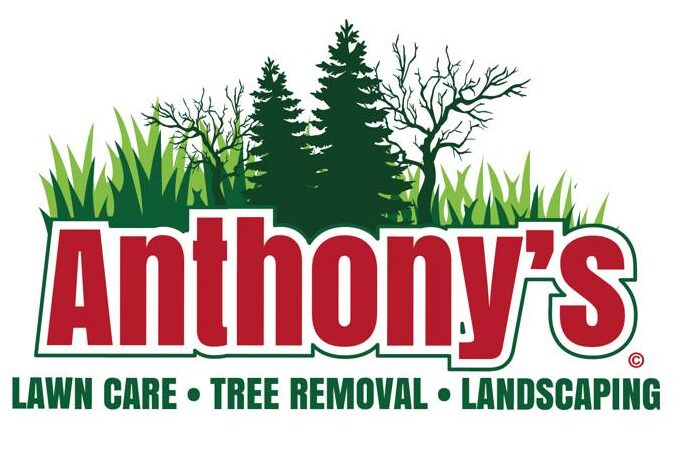
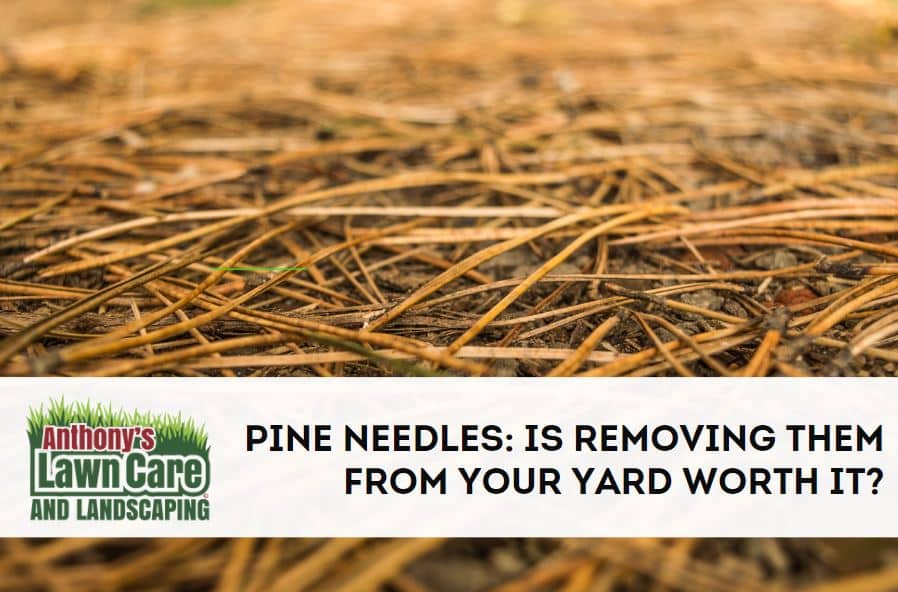

Recent Comments